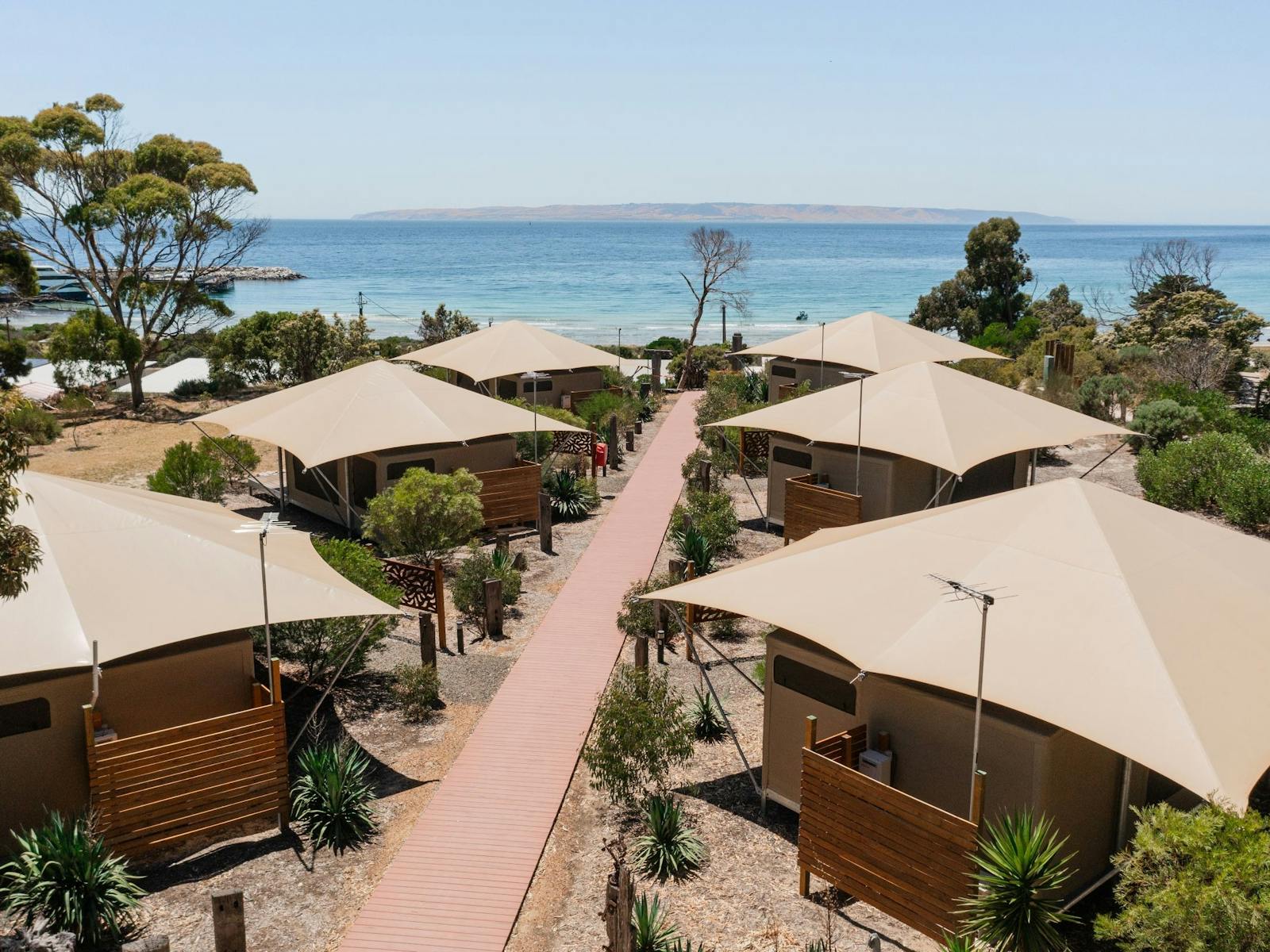The namesake of Kangaroo Island, the Kangaroo Island Kangaroo is one of the animals on Kangaroo Island and is the only species of kangaroo that occurs on the Island. They have evolved differently from mainland kangaroos and are a subspecies of the Western Grey Kangaroo. They are very common right across the Island.
Kangaroo Island Kangaroo Facts
Noticeably different than their mainland cousins, with a shorter and stockier build and much darker chocolate brown fur. Adult male kangaroos can stand up to 105–140 cm tall and females up to 85–120 cm tall. Being very agile, they can leap up to 12 metres in a single hop and reach speeds of 60 km/h.
Kangaroo Island Kangaroos are herbivores, feeding on grasses and native shrubs. They have adapted to require very little water. Common in a variety of habitats right across the Island, they can be found in open woodland, scrubland, grassland areas and pastureland.
Breeding can occur right throughout the year, particularly when conditions are good, however often the peak is in summer. Kangaroos live in groups called a ‘mob’, where there is one dominant male, who is the head of the mob. Sometimes the head of the mob will be challenged by another male leading to a fight for the right to be the leader. These fights can get quite aggressive with large adult males ‘sitting back' on their tails and punching their strong hind legs forward into their opponent in a boxing-style fight.
Where to find them
Kangaroo Island kangaroos are nocturnal, during the day they often rest under vegetation, coming out to graze in the early morning and late afternoon. It is common to sometimes see kangaroos during the day on Kangaroo Island. Commonly spotted on roadsides, but for the best viewing you might find them feeding on grassy flats in many areas right across the island, some great spots include:
- On the Hog Bay Road from Prospect Hill to Baudin Beach, grazing in the paddocks alongside the road, find a safe park, well off the road and watch them feeding.
- At Stokes Bay in and around the grassy flats near the beach car park and up on the grassy hills, park in the car park and take a short stroll.
- At Cape Willoughby Lighthouse, look to the left under the shea-oak trees as you approach the lighthouse, they are resting, or also like to live amongst the low coastal vegetation in front of the lighthouse
How to watch them
Kangaroo Island kangaroos are generally shy of humans. If you can find a quiet, slightly obscured place to observe them, you will be rewarded with a relaxed animal going about their normal business. They are most active in the late afternoon, throughout the night and into the early morning, so have particular care on the roads during these times. During the day, they are usually found resting in the shade, particularly during hot weather. In the colder months, they will be found grazing in open pastures during the day times. If startled they will quickly bound off, retreating for the safety of cover. Occasionally adult males can become aggressive if they feel threatened, so please take care and observe from a respectful distance.
Did you know?
Kangaroos find it very difficult to move backwards, due to the structure of their legs. They can shuffle backwards in an uneasy fashion using their forearms to push back; however they compensate for this with an ability to swiftly turn and dart away.














